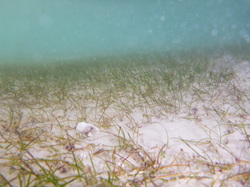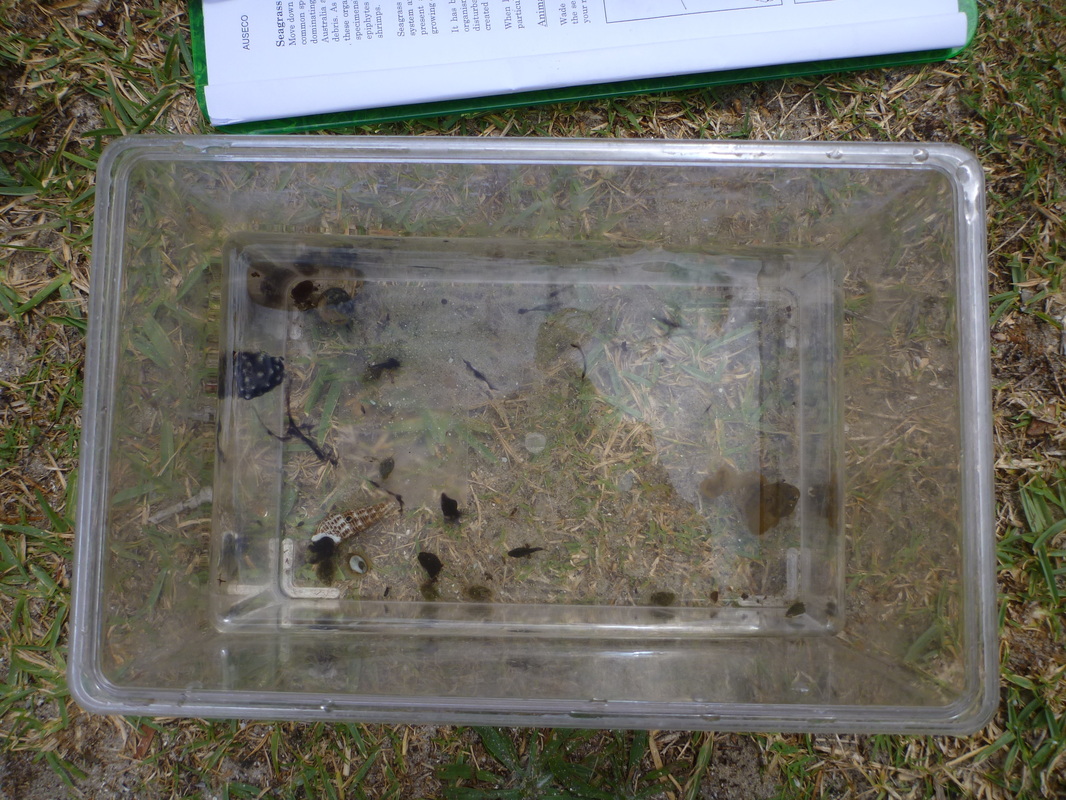Intertidal wetlands - Fieldwork
Biodiversity survey
Using a dip-net, a plastic container and an identification chart you can undertake a biodiversity survey. In the container on the left there was a squid, fish and various types of whelk that needed to be identified using the ID chart.
Seagrass-Watch

If you would like to take part in an organised program, you may like to have a look at Seagrass-Watch. The organisation is the largest sea grass monitoring program in the world and monitor sea grass in over 165 locations.
Their website provides an overview of sampling methods and students can examine data from the other sites from around the world.
Seagrass.org
Their website provides an overview of sampling methods and students can examine data from the other sites from around the world.
Seagrass.org
Conducting your own fieldwork - Water pH and Salinity
|
|
|

